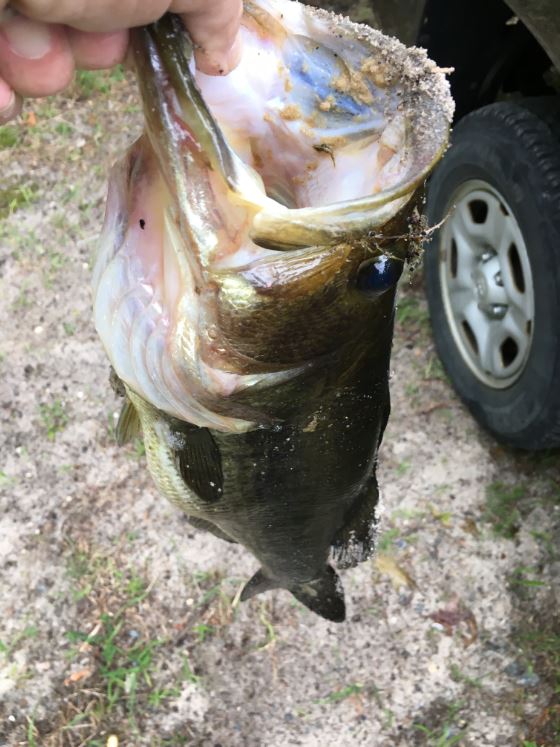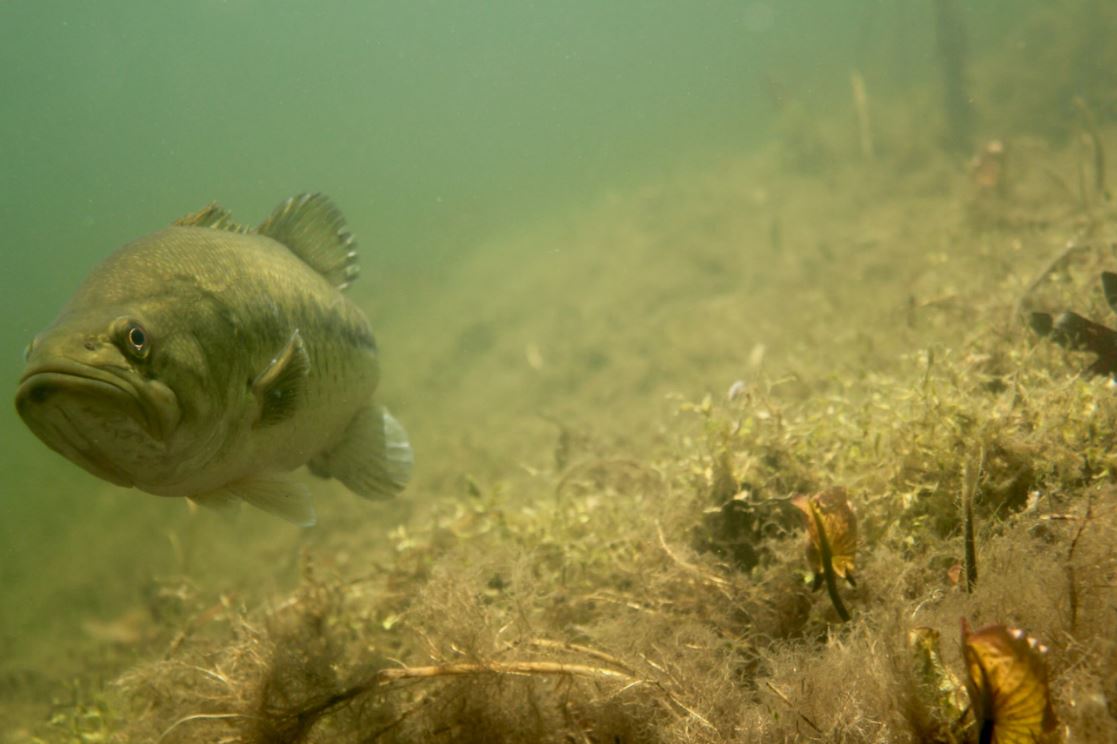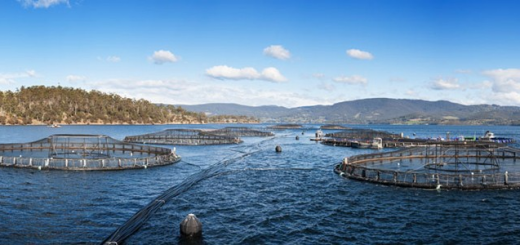Angling for nesting largemouth bass can have negative effects on spawning success
Largemouth bass (Micropterus salmoides; Figure 1) are a highly prized freshwater gamefish in the sunfish family, Centrarchidae. They are native to east-central North America but have been introduced worldwide due to their popularity with recreational anglers. Largemouth bass are voracious ambush predators well known for their aggressive behavior. Unfortunately, this aggression can make male largemouth bass vulnerable to anglers during the spawning season.

As temperatures warm in the spring, male largemouth bass move from their deep wintering areas into shallow waters along the shoreline to prepare their nests. Once they locate a suitable site (typically a sheltered area with gravel, firm mud or hard-packed sand) they use their tails to fan a circular depression in the bottom. Largemouth bass begin spawning after water temperatures warm to about 16˚C to 17˚C. After the eggs are fertilized, the female returns to deeper water and the male guards the nest. Male bass periodically fan silt away from the eggs until they hatch after two to four days. After hatching, the male will continue to protect the brood for several weeks from predators such as bluegill (Lepomis macrochirus), pumpkinseed (Lepomis gibbosus), and rock bass (Ambloplites rupestris). Once the young bass are swimming on their own (Figure 2), the male will lead them away from the nest before leaving them to return to deeper water.

During the spawning season, largemouth bass do not actively feed. Most bass that are caught by anglers during this time of year are males that are aggressively defending their nests from intruders such as other fish and even fishing lures. Largemouth bass spawning success is dependent on the males protecting the eggs and larvae (Figure 3). If the male is removed from the nest, the brood will quickly be consumed by predators. In areas with heavy recreational fishing pressure during the spawn, captured males will abandon their nests due to physical stress and the loss of their broods. Largemouth bass also exhibit high levels of nest site fidelity, returning to the same spawning areas each year. This may be due to the success the male had at raising a brood in these areas in years prior. If a male abandons the nest, they might not return to nest in the same area the following year, instead possibly opting for less ideal habitat.

Over the course of a long-term study on largemouth bass spawning, William Twardek and Dr. Steven Cooke from Carleton University and Dr. David Philipp from the Illinois Natural History Survey examined the effects of angling on nest site fidelity. The study took place at Long Lake, a 70 hectare natural lake at the Queen’s University Biological Station in Southern Ontario. Long Lake is closed to the general public and has been used since 1998 to research largemouth bass nesting behaviors. The entire littoral zone of the lake is suitable habitat for nesting with firm substrate and an abundance of structure and woody debris.
Two separate experiments were conducted during the spawning season in 2004-2005 and 2014-2015. During the first year of each experiment, snorkel surveys were conducted along the shoreline of the lake to locate nesting males. That same day, the males were captured using rod and reel from a boat and quickly tagged with Passive Integrated Transponder (PIT) tags so they can monitor each individual bass. The nests were marked with a numbered tile that was left in the lake until the following year. In the 2004 experiment, the researchers emulated heavy fishing pressure by capturing the nesting males every other day using rod and reel until they either abandoned their nests or successfully raised their brood. During the 2014 experiment, the nesting bass were captured only once during the spawning season. During the second year of each experiment, the nesting males were located again by snorkeling. They were then caught and identified by the PIT tags they were implanted with the year before. The locations of the nests were then mapped to compare with the nest sites from the previous year.
Nest site fidelity declined for the bass that experienced heavy angling pressure. About 90% of the bass abandoned their nest after being captured multiple times in 2004. The following year, only 27% returned to spawn at a location within 10 m of their nest from the year before. Most of the bass had traveled farther away and nested over 50 m from their previous nest site. In contrast, nest site fidelity was high for the nesting males in the 2014 experiment where they were caught only once during the spawning season. Almost 97% of the males successfully raised their broods in 2014. The following year, about 87% of the males were found to be nesting within 10 m of their nest site from the previous year.
The results from this study show that angling pressure during the spawning season can have negative effects on the reproductive success of largemouth bass. Nest site fidelity may be associated with the success a male bass had at raising a brood in prior years. If driven away from their nests, male bass may nest in areas with less than ideal habitat the following year. Further studies are needed to understand the nest site fidelity of largemouth bass to support the proper management of the species.
Reference:
Twardek, W.M., A.D. Schultz, J.E. Claussen, S.J. Cooke, J.A. Stein, J.B. Koppelman, F.J.S. Phelan, and D.P. Philipp. 2017. Potential consequences of angling on nest-site fidelity in largemouth bass. Environmental Biology of Fishes 100(5): 611-616.



